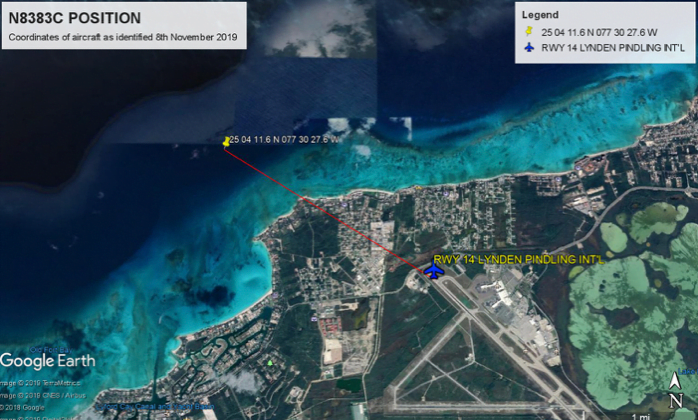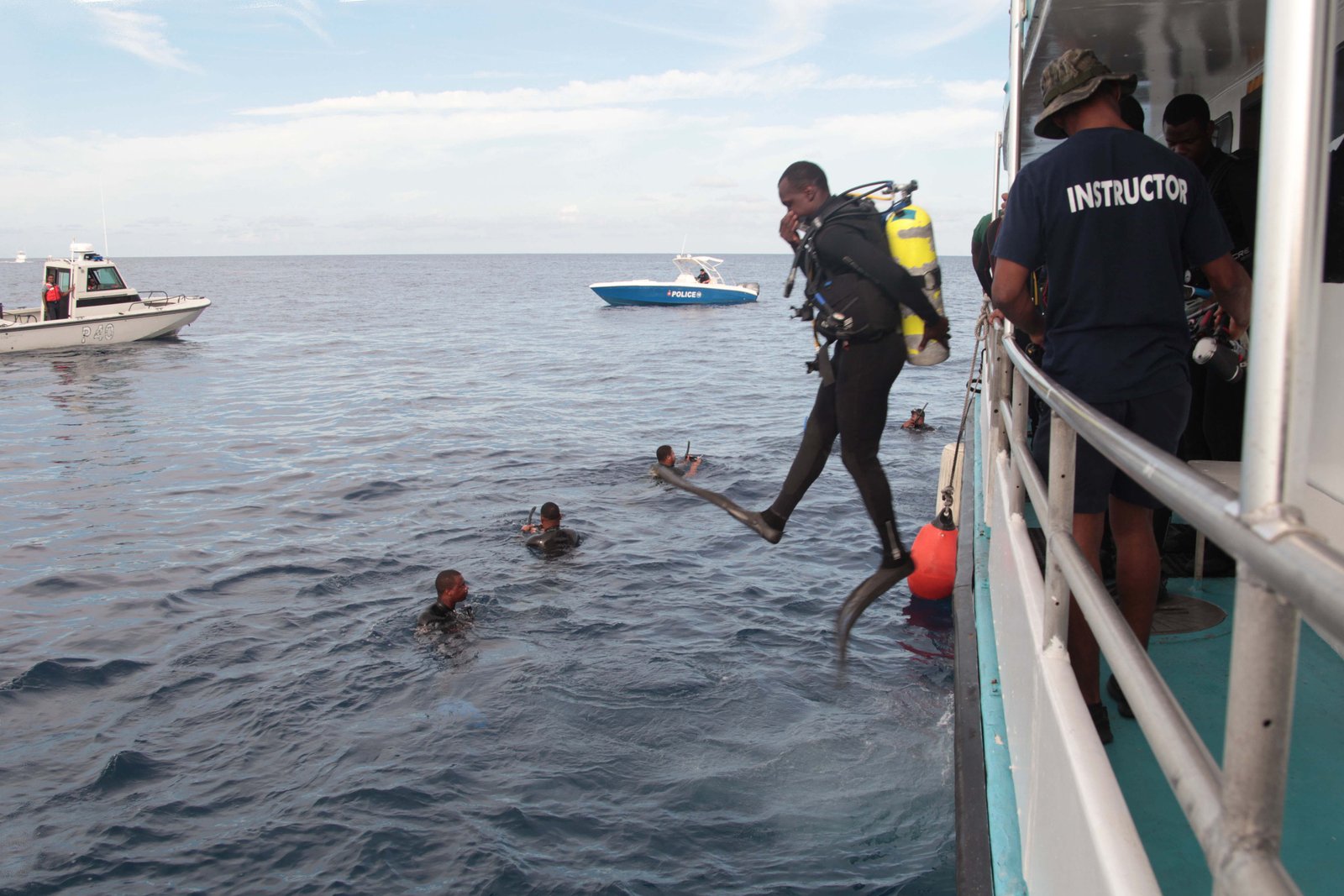NASSAU, BAHAMAS — Despite being a signatory state to the convention of international civil aviation, The Bahamas has yet to establish and implement the necessary requirements to meet international search and rescue standards.
The revelation came in the Air Accident Investigation Department’s (AAID) final report into the November 8, 2018, crash of missing pilot Byron Ferguson revealed.
The report, obtained by Eyewitness News Online, was completed on Monday.
“The Bahamas, as a signatory state to the Convention on International Civil Aviation (27th May 1975) is obligated to comply with the standards and recommended practices (SARP) as prescribed in the Convention and outlined in its nineteen annexes,” read the report.
“Annex 12 to the convention on International Civil Aviation, entitled ‘search and rescue’ specifically outlines the SARPs that are to guide contracting states in the establishment and conduct of search and rescue activities.
It continued: “Over the years, steps were initiated by the government of The Bahamas to adopt the SARPs contained in annex 12.
“However, to date, there has been no effective establishment and implementation of the necessary requirements as specified in annex 12 relatives to search and rescue.”
Ferguson departed the West Palm Beach at approximately 7:26 p.m.

At 8:50pm, the pilot said: “Tower, eight three Charlie, I’m having engine problems.”
The AAID said it was notified around 9:03 pm that Nassau Air Traffic Control had lost radar contact with the aircraft in the area of Nirvana Beach sometime after 8:50 pm.
Response
LPIA crash and rescue fire services, the police and defense force, the United States Coast Guard and the Bahamas Air Sea Rescue Association were immediately alerted of the incident and search and rescue assets were deployed by the responding agencies, according to the report.
The AAID said the RBDF dispatched two vessels from the Harbour Patrol Unit based in the Nassau Harbor and one vessel from the Coral Harbor Base, in addition to a roving patrol ground team to conduct shoreline searches.
At 9:50 pm, the first RBDF vessel arrived on scene.
Shortly thereafter, vessels from BASRA, police force marine unit vessel and the U.S. Coast Guard helicopter arrived on scene.
The AAID said rescue crews attached to the defense force reported they observed the tail section of the aircraft above the water when they arrived on scene.
However, shortly after visual contact of the aircraft was made, it disappeared below the surface, according to the report.
With the assistance of the U.S. Coast Guard, which provided aerial sweeps of the area, searches were conducted with “hopes of recovering the occupant(s) of the aircraft in the water”.
But no one was observed or rescued during the search.
Search efforts continued until approximately 2 a.m. and operations resumed at 6 a.m. on November 9.
The search went on for several more days; however, they were hampered by inclement weather.
Some miscellaneous items, including the airframe, believed to be from the aircraft, were recovered by the RBDF and other agencies between November 9 and November 13.
Search and rescue divers estimated the depth of the water in the area the aircraft was initially observed to be approximately 60 feet.
During their search operations, contents presumably from the aircraft was discovered, including 47 one-quart bottles of aviation oil.
Eight days after the incident, the wingtips, engine cowling and other small parts and additional cargo were located by concerned civilians and a team of deep-sea divers off the western coast of New Providence — near Nirvana Beach where the aircraft crashed, the report said.
“Based on debris path, it appears the underwater currents carried the larger portion of the aircraft over the continental shelf into much deeper water than humans can access unaided by specialized equipment,” the report read.
The pilot and major components of the were never recovered.
The search for the wreckage slowed in late November.
The incident was one of intense public scrutiny as law enforcement agencies, particularly the Royal Bahamas Defense Force, which had charge of the search and recovery effort, was put under the spotlight.
At the time, then RBDF Commodore Tellis Bethel said: “No efforts were made to secure the aircraft because our priority right then and there was to look for persons who might have been alive in the water”.
The AAID made clear the intention of the report was not to apportion blame nor assess individual or collective liability, but to draw lessons from the occurrence, which may help prevent future accidents.
The authority also determined the probable cause of this accident to be loss of control in flight resulting in uncontrolled flight into the ocean.
Engine malfunction was determined to be a contributing factor in the loss of control.
All maintenance records were reviewed from the engine, airframe and propeller relevant to October 5, 2018.
It could not be determined if the aircraft was overweight, as weight and balance documentation was not recovered nor was there an exact accounting of the aircraft’s weight and load prior to departing.






